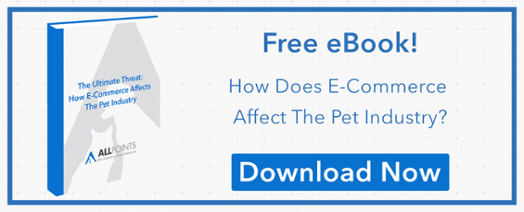E-commerce is on the rise and with it are prices that are more competitive than ever. With online retailers competing so rigorously, many independent pet retailers are having a hard time keeping up.
Because of these changes in pricing trends, many pet product manufacturers are doing all they can to keep the playing field, and their margins, even across the board. Recently, manufacturers such as The Company of Animals, West Paw, Oxbow, Einstein Pets, and Advantek have all adopted MAP policies on their products.
However, as these companies adopt policies, questions arise around the enforcement and the complications surrounding them. While the use of MAP policies gains momentum in the pet industry, let's take a moment to gain an understanding of how they're being implemented, enforced, and kept fair for everyone.
Understanding MAP Policies
So what is a MAP policy? A minimum advertised price policy places restrictions on the lowest price a product is allowed to be advertised as. Although the product can be sold at a lower price, it cannot be advertised as such.
 At first glance, it's easy to misunderstand MAP as a form of price fixing. However, it's important to note that retailers can still sell products under a set MAP price. To do so, an online retailer simply hides the price of the item until it's added to a customer's cart (as pictured).
At first glance, it's easy to misunderstand MAP as a form of price fixing. However, it's important to note that retailers can still sell products under a set MAP price. To do so, an online retailer simply hides the price of the item until it's added to a customer's cart (as pictured).
These policies are often set in place by pet product manufacturers who are trying to avoid having their products be under-priced in the online marketplace. This is especially true for brands who rely on not being the "lowest price option" but rather the "highest quality option."
One concern over MAP policies has to do with whether they help or hinder a pet owner's customer journey. Pet Business Magazine makes a statement about this issue, which can be found here. They leave the question open to readers to answer as well (feel free to comment below and we will pass on to Pet Business Magazine).
Related Article: 4 Things Brick and Mortar Pet Stores Can Learn From Amazon
MAP Policy Enforcement
One common concern both independent and online pet retailers have expressed is the question of enforcing these policies. In other words, once a manufacturer has established the minimum advertised price with their online retailers, how do they ensure it sticks?
A recently published study found that 15% of retailers violate MAP policies. While this isn't terribly high, there's certainly work that needs to be done to ensure these policies are followed by everyone.
Although the process may vary slightly per manufacturer, enforcing a MAP policy looks a little bit like this:
- The manufacturer chooses the minimum advertised price for each product
- The manufacturer then puts together a contract (with their lawyers) and reaches out to the online retailers they work with
- Once the contract is signed by the retailer, prices must be enacted and kept in place until otherwise instructed by manufacturer
- The manufacturer monitors prices by retailers on a regular basis - although some monitoring is done manually, tools such as MAP TRAPP automate the process
- If violated, the manufacturer reaches out to the retailer notifying them of the violation and a request for action
- Ideally, the retailer will make corrections to bring the advertised price back up to speed
MAP violations are a problem for manufacturers because they often upset the retailers who are conforming to the policy, they make independent pet shops irrelevant (in price wars) and they can even erode the company brand.
Related Article: Is E-Commerce a Threat to the Pet Industry?
Case Study
In 2016, Advantek noticed that their products were quickly decreasing in retail price due to the highly competitive nature of their e-commerce retailers. Some larger vendors were willing to loose money for market share, which was upsetting not only independent stores, but also other e-commerce shops that were sticking more closely to their set margins.
As a solution, Advantek decided to impose MAP policies on all new products rolled out starting in 2016. The process of rolling out the policy looked similar to as described above, and they found that many customers were happy to comply, so long as everyone else did.
On a weekly basis, Advantek monitors their customer's sites both manually and through MAPP TRAP and notifies violators as soon as an infringement is noticed. Within 24 hours, the price is usually rectified and everyone moves on happily selling chicken coops, rabbit hutches, and the Pet Gazebo.
In general, Advantek has noticed a much better handle of their brand's value since enacting MAP policies on their new products. Since price wars are no longer an issue, it's much easier for independent shops and e-commerce sites alike to share the market and sell products.
---
Although MAP policies aren't perfect, they are a great way to even the playing field, especially as e-commerce continues to grow. The policies take price out of the equation and help maintain brand value to pet owners across the country.
As we discuss the growth of online shopping, it's worth questioning: is e-commerce really a threat to the pet industry?
GET IN TOUCH
Click here to sign up for our monthly newsletter to stay up to date on current market trends in the pet industry.
No Comment





Leave a reply
Your email address will not be published. Required fields are marked *